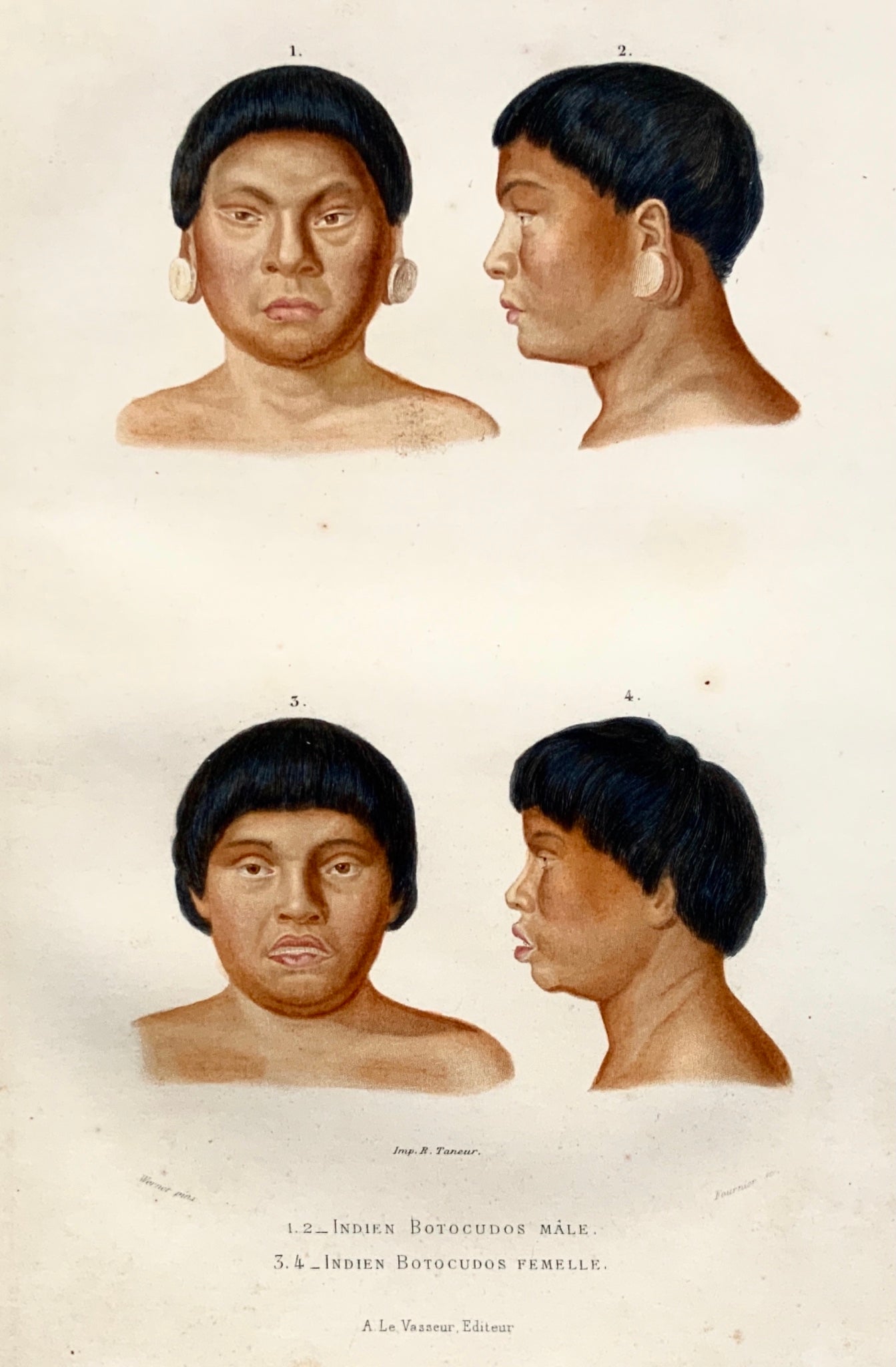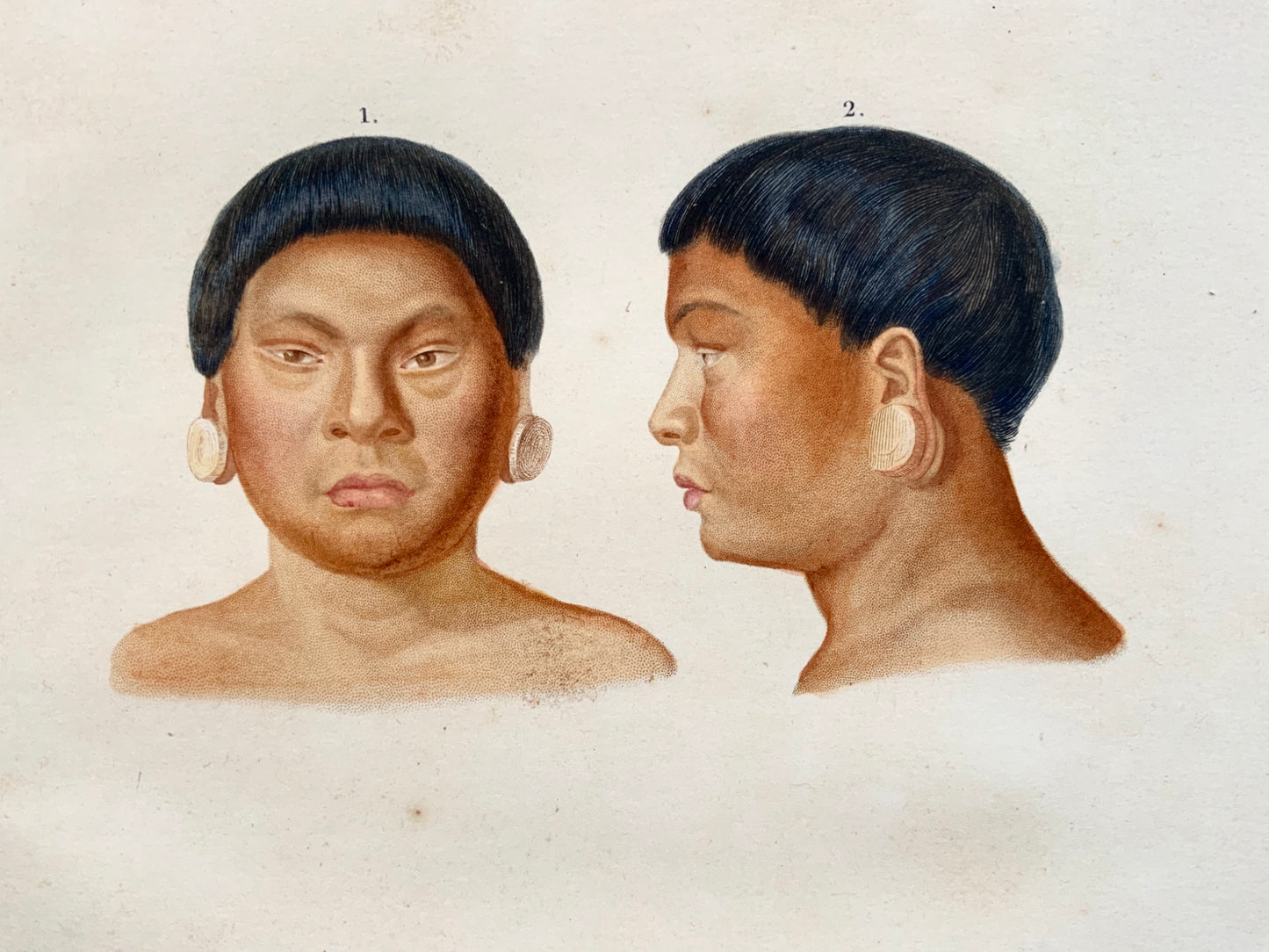1849 Fournier after Werner - Botocudo Indians - original hand colour - Ethnology
1849 Fournier after Werner - Botocudo Indians - original hand colour - Ethnology
Couldn't load pickup availability
The Aimoré (Aymore, Aimboré) are one of several South American peoples of eastern Brazil called Botocudo in Portuguese (from botoque, a plug), in allusion to the wooden disks or tembetás worn in their lips and ears. Some called themselves Nac-nanuk or Nac-poruk, meaning "sons of the soil". The last Aimoré group to retain their language are the Krenak. The other peoples called Botocudo were the Xokleng and Xeta.
This originally hand-coloured was issued in Charles D’Orbigny’s work Dictionnaire Universel d’ Histoire Naturelle.
The work was considered one of the paramount natural history collections of that time featuring wonderfully illustrated natural history plates.
Many distinguished artists contributed to the work include Edouard Travies, Susemihl, Oudart, Werner, Vaillant, Meunier, Dalarue, Blanchard, Maubert, and Pretre. Most of the bird illustrations were provided by Travies who was a celebrated artist of his time. Each plate features the order, genus, and species printed in Latin and French in the lower margin. The plates feature great detail and attractive original hand coloring. Many of the plates were finished with shellac which adds to the strength of the colouring.
27.3 x 18.3 cm
Printed on fine thick cream toned paper.
Édouard Traviès de Villers (24 March 1809 – 18 November 1876) was a French watercolourist, lithographer and illustrator. He regularly exhibited works at the Paris Salon between 1831 and 1866 and was primarily known for his paintings of natural history subjects, especially birds. His greatest work was Les oiseaux les plus remarquables par leurs formes et leurs couleurs.
Very light age toning.
Share




Subscribe to our emails
Subscribe to our mailing list for insider news, product launches, and more.



